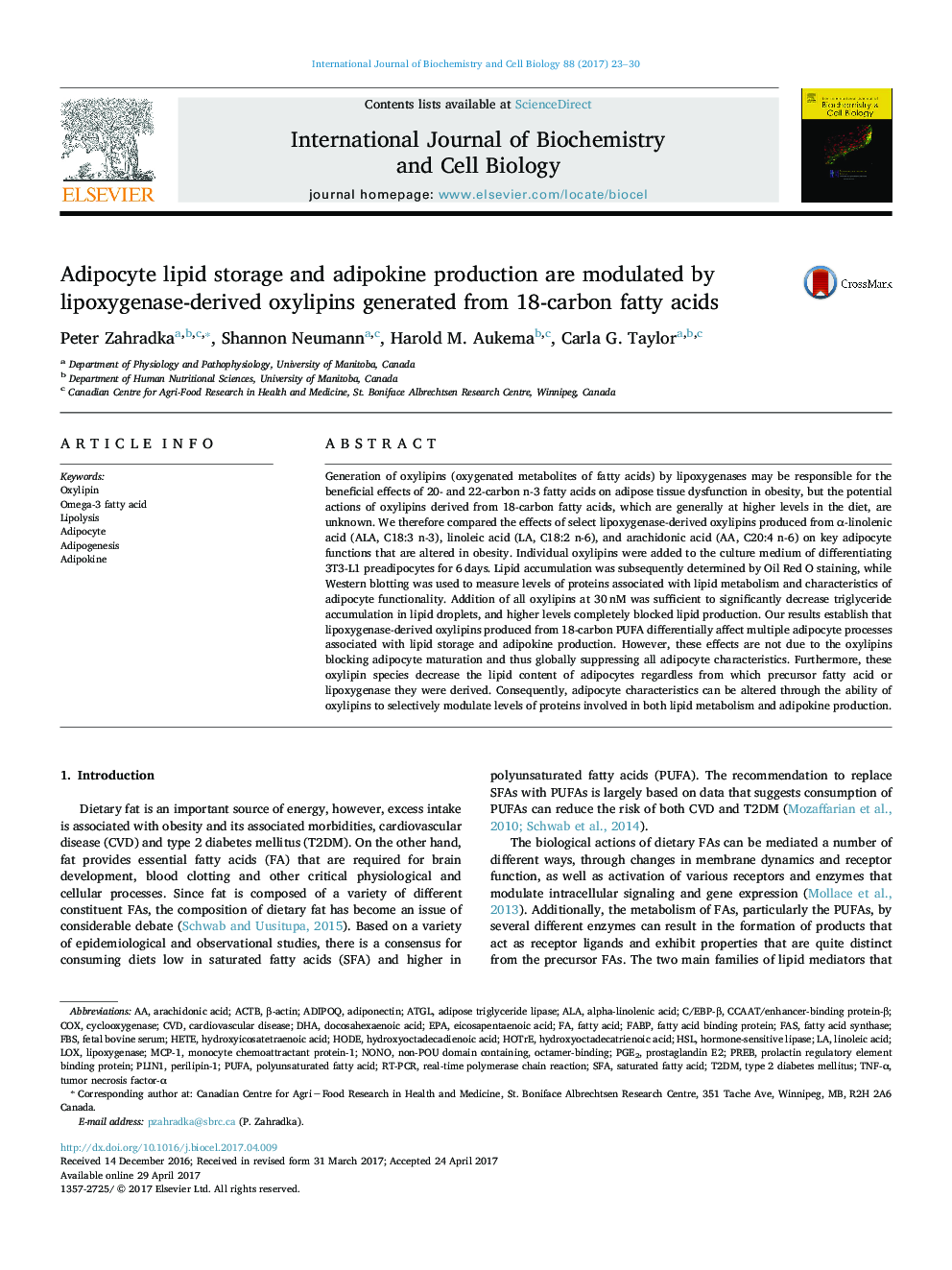| Article ID | Journal | Published Year | Pages | File Type |
|---|---|---|---|---|
| 5511368 | The International Journal of Biochemistry & Cell Biology | 2017 | 8 Pages |
Abstract
Generation of oxylipins (oxygenated metabolites of fatty acids) by lipoxygenases may be responsible for the beneficial effects of 20- and 22-carbon n-3 fatty acids on adipose tissue dysfunction in obesity, but the potential actions of oxylipins derived from 18-carbon fatty acids, which are generally at higher levels in the diet, are unknown. We therefore compared the effects of select lipoxygenase-derived oxylipins produced from α-linolenic acid (ALA, C18:3 n-3), linoleic acid (LA, C18:2 n-6), and arachidonic acid (AA, C20:4 n-6) on key adipocyte functions that are altered in obesity. Individual oxylipins were added to the culture medium of differentiating 3T3-L1 preadipocytes for 6 days. Lipid accumulation was subsequently determined by Oil Red O staining, while Western blotting was used to measure levels of proteins associated with lipid metabolism and characteristics of adipocyte functionality. Addition of all oxylipins at 30 nM was sufficient to significantly decrease triglyceride accumulation in lipid droplets, and higher levels completely blocked lipid production. Our results establish that lipoxygenase-derived oxylipins produced from 18-carbon PUFA differentially affect multiple adipocyte processes associated with lipid storage and adipokine production. However, these effects are not due to the oxylipins blocking adipocyte maturation and thus globally suppressing all adipocyte characteristics. Furthermore, these oxylipin species decrease the lipid content of adipocytes regardless from which precursor fatty acid or lipoxygenase they were derived. Consequently, adipocyte characteristics can be altered through the ability of oxylipins to selectively modulate levels of proteins involved in both lipid metabolism and adipokine production.
Keywords
EPAPGE2ALAMCP-1ADIPOQHSLFABPFASPLIN1FBSCOXPreBHOTrEC/EBP-βHODEβ-actinadiponectincyclooxygenaseAtglArachidonic acidalpha-linolenic acidEicosapentaenoic aciddocosahexaenoic acidLinoleic acidhydroxyoctadecatrienoic acidhydroxyoctadecadienoic acidFatty acidfatty acid synthaseLOXcardiovascular diseaseDHACVDfetal bovine serumActbadipose triglyceride lipasehormone-sensitive lipaselipoxygenasenonoHETEFatty acid binding proteinmonocyte chemoattractant protein-1Prostaglandin E2
Related Topics
Life Sciences
Biochemistry, Genetics and Molecular Biology
Biochemistry
Authors
Peter Zahradka, Shannon Neumann, Harold M. Aukema, Carla G. Taylor,
